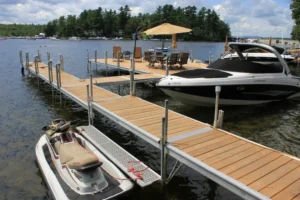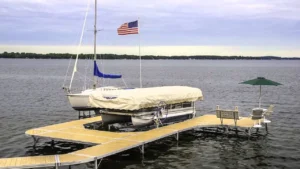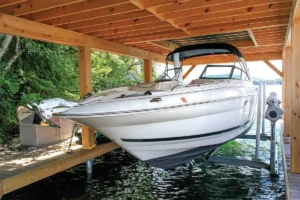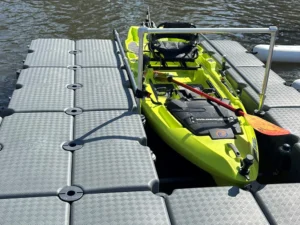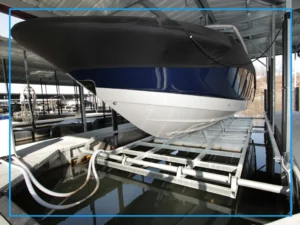How to Choose the Right Shallow Water Boatlift for Your Dock
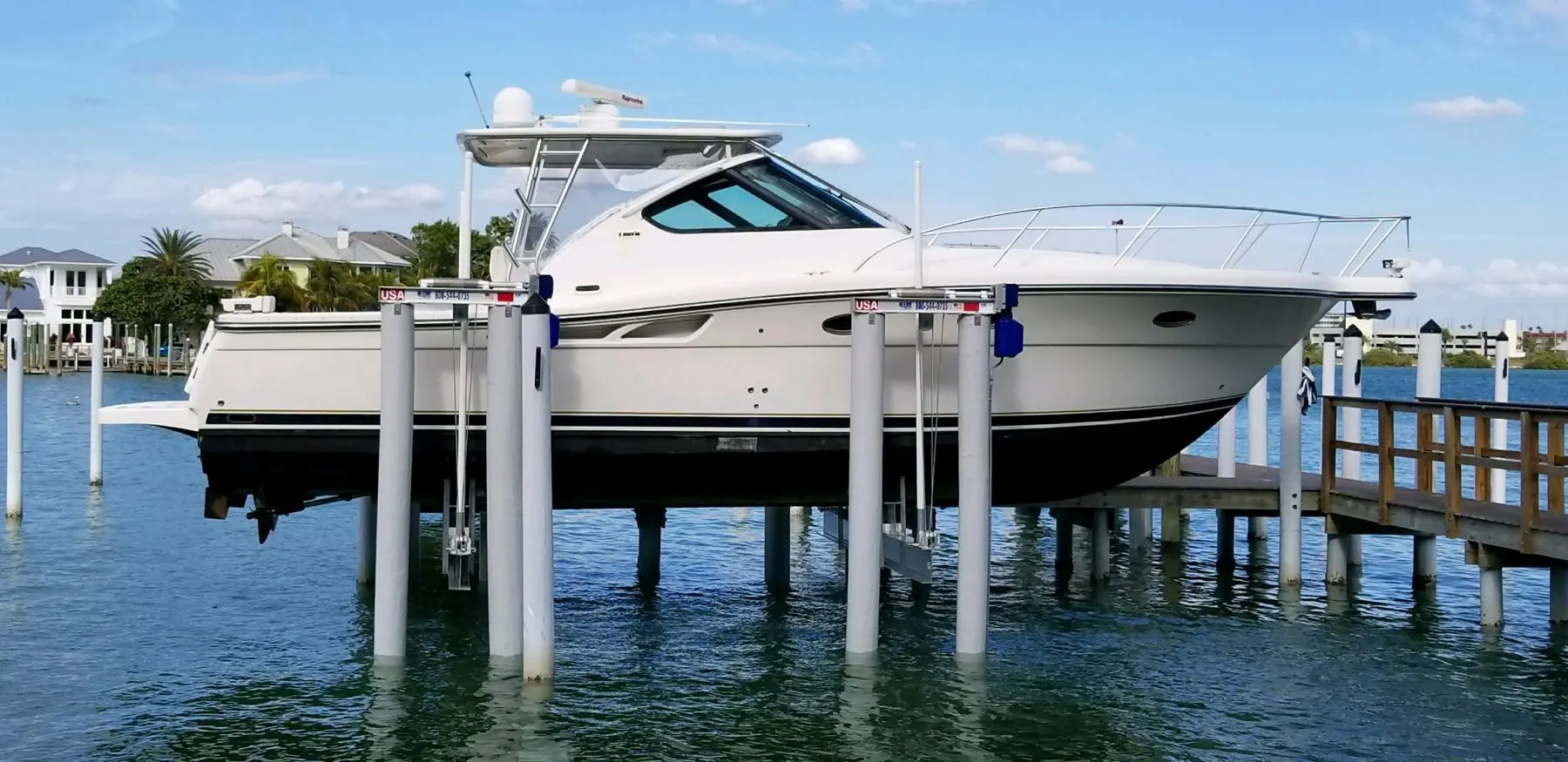
Docking a boat in shallow waters presents unique challenges. Insufficient water depth can damage your boat’s hull, strain your dock, and create safety hazards during boarding or mooring. For boaters in lakes, rivers, or coastal areas with fluctuating or shallow water levels, choosing the right shallow water boatlift is critical. Equally important is selecting a reliable boatlift controller to ensure safe and convenient operations.
Understanding Shallow Water Boatlifts
What Are Shallow Water Boatlifts?
Shallow water boatlifts are specifically engineered for locations where traditional lifts cannot operate. They can function in as little as 24 inches of water, making them essential for areas with limited depth or variable conditions. These lifts raise your boat out of the water, protecting the hull from algae growth, corrosion, and wave action while ensuring effortless launching and docking.
Why Standard Boatlifts May Not Suffice
Traditional boatlifts typically require deeper water and can become ineffective or even hazardous when used in shallow or fluctuating environments. If a standard lift fails to raise the boat completely, it can lead to hull damage, increased maintenance, and instability at the dock. Moreover, these lifts often don’t adjust well to shifting water levels, increasing the risk of mechanical wear and tear or structural failure.
Types of Shallow Water Boatlifts
1. Floating Boatlifts
Floating boatlifts are designed to rise and fall with changing water levels, making them perfect for areas affected by tides, rainfall, or seasonal fluctuations. One popular model is the UltraLift Shallow Water Series, which features robust polyethylene tanks and corrosion-resistant components. These modular systems are adaptable, easy to install, and minimize impact on the dock structure.
2. Bottom-Standing Lifts
These are fixed-position lifts that rest on the bottom of the water body. Ideal for stable, shallow water locations with firm ground (e.g., sandy or rocky bottoms), bottom-standing lifts offer excellent load-bearing strength and consistent performance. However, they require precise installation and periodic checks to ensure bottom stability.
3. Cantilever and Vertical Lifts
Cantilever lifts use a pivoting mechanism and are reliable in shallow but steady water depths. However, they may not perform well in fluctuating conditions. In contrast, vertical lifts offer a broader range of motion, lifting boats higher and accommodating both shallow and variable-depth water environments.
Key Factors to Consider
Boat Specifications
Before selecting a boatlift, evaluate your boat’s:
- Weight, including accessories, fuel, and gear
- Dimensions, particularly length, width, and hull shape
Different hull designs (e.g., pontoon, V-hull, flat bottom) have varying lift support requirements.
Dock and Shoreline Characteristics
Assess your dock type:
- Floating docks pair well with floating boatlifts.
- Fixed docks may work better with bottom-standing or vertical lifts.
Also consider shoreline factors:
- Bottom Composition: Muddy or sandy bottoms might not support bottom-standing lifts well.
- Wave and Traffic Exposure: High-traffic areas require robust lifts and more stable docking solutions.
Water Depth and Fluctuations
Know your:
- Minimum and average water depths
- Seasonal or tidal fluctuations
A detailed understanding of water behavior ensures the lift won’t bottom out or lose lifting capacity during dry seasons.
Boatlift Controllers
Importance of Controllers
Boatlift controllers are the brain of the lift, ensuring precise, smooth, and safe operation. They help regulate speed, lift alignment, and stopping points, minimizing wear on both lift and boat.
Types of Controllers
- Single-Valve Controllers: Offer basic lift and lower functions. Cost-effective but limited in precision.
- Dual-Valve Controllers: Provide better balance and smoother motion, especially important in shallow water lifts.
- Wireless & Remote Options: Add convenience by allowing control from a distance, making daily operation easier and safer.
Selecting the Right Controller
Match the controller to the lift model and consider:
- Compatibility: Not all controllers work with every lift.
- User Preference: Some users prefer physical switches, while others value app-based or remote controls.
- Safety Features: Auto-stop, alarms, and emergency shutoff add layers of security.
Top Recommendations
1. Hydro Hoist Ultra Lift Shallow Water
- Operates in as little as 24 inches of water.
- Durable design with poly tanks and marine-grade aluminum.
2. LOTO Lift Shallow Water Models
- Known for adaptability to multiple boat sizes and weights.
- Heavy-duty frames and optimized lifting systems.
3. EZ Dock Floating Lifts
- Modular, low-maintenance, and customizable.
- Ideal for fluctuating environments and easy retrofitting.
Installation and Maintenance Tips
- Professional Installation: Recommended for complex systems or difficult terrain. Ensures optimal lift placement and longevity.
- DIY Considerations: Feasible for experienced boaters with smaller, modular systems.
- Regular Maintenance: Includes checking cables, lubricating components, inspecting for corrosion, and monitoring controller function.
- Seasonal Adjustments: Especially in areas with freezing temperatures, consider winterizing your lift or performing thorough post-season inspections.
Lift Off with Confidence in Shallow Waters
Selecting the right shallow water boatlift and controller isn’t just about convenience—it’s about protecting your investment, enhancing daily boating experiences, and ensuring long-term functionality. Shallow water conditions demand more thoughtful planning than deepwater setups, but with the right information and equipment, you can enjoy smooth sailing all season long.
Whether you’re installing a new lift or upgrading an old system, take time to assess your dock’s layout, boat specifications, and water behavior. And remember, boatlift controllers are key to efficiency and safety—choose one that complements your lift and suits your operating style.

